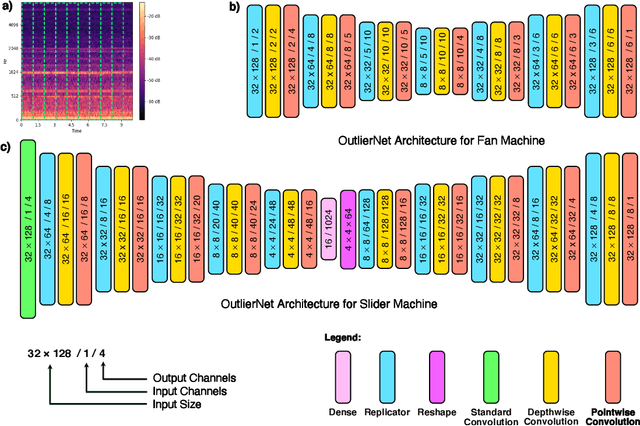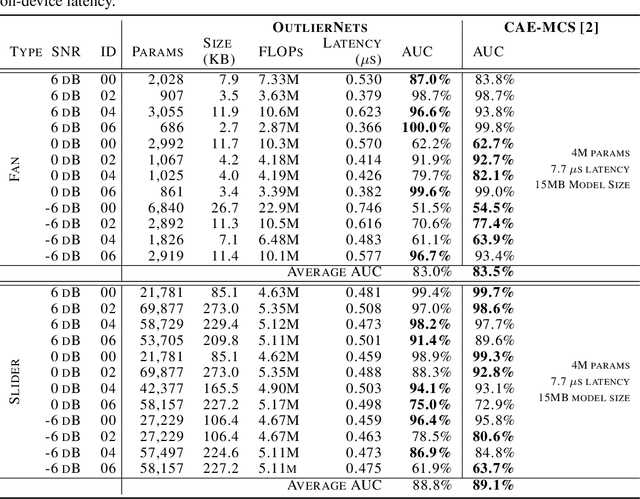OutlierNets: Highly Compact Deep Autoencoder Network Architectures for On-Device Acoustic Anomaly Detection
Paper and Code
Apr 19, 2021

Human operators often diagnose industrial machinery via anomalous sounds. Automated acoustic anomaly detection can lead to reliable maintenance of machinery. However, deep learning-driven anomaly detection methods often require an extensive amount of computational resources which prohibits their deployment in factories. Here we explore a machine-driven design exploration strategy to create OutlierNets, a family of highly compact deep convolutional autoencoder network architectures featuring as few as 686 parameters, model sizes as small as 2.7 KB, and as low as 2.8 million FLOPs, with a detection accuracy matching or exceeding published architectures with as many as 4 million parameters. Furthermore, CPU-accelerated latency experiments show that the OutlierNet architectures can achieve as much as 21x lower latency than published networks.
 Add to Chrome
Add to Chrome Add to Firefox
Add to Firefox Add to Edge
Add to Edge